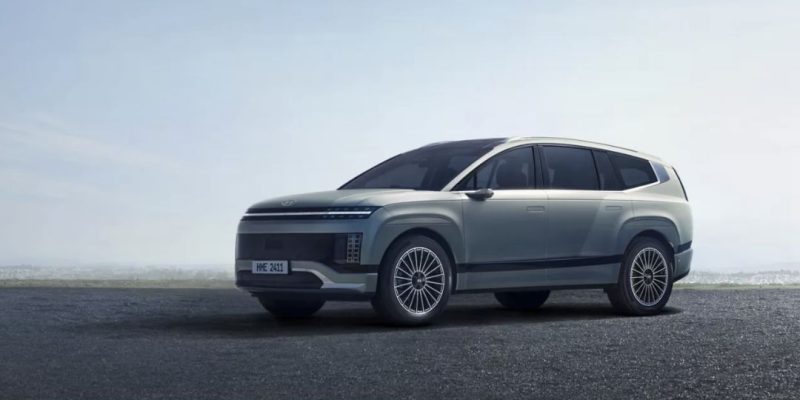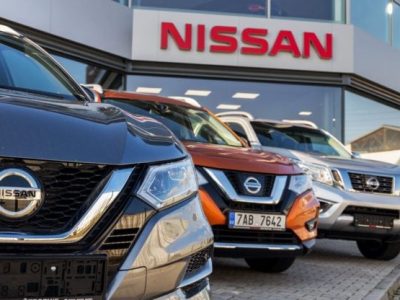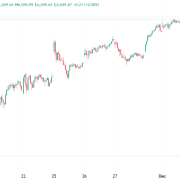
Hyundai Motor has unveiled its first three-row electric SUV, the IONIQ 9, marking a significant move into the burgeoning market for large family EVs.
Set to launch in the US and Korea early next year, with subsequent releases in Europe and other markets, the IONIQ 9 boasts a range exceeding 300 miles, according to a company statement.
Three-row EVs: from niche to necessity
Three-row SUVs have become the vehicle of choice for families, eclipsing minivans and station wagons in popularity.
Automakers are now betting big on their electric counterparts, envisioning these spacious EVs as future profit centers as battery costs decrease.
This strategic move is driven by the expectation that three-row SUVs will dominate the EV landscape just as they do the gasoline-powered market.
Navigating the challenges of big electric SUVs
While most EVs currently operate at a loss, the profitability of their gasoline-powered equivalents fuels optimism for future returns.
However, developing electric versions presents unique challenges.
“It’s a very important segment on the gas side,” noted Sam Fiorani, vice president at research firm AutoForecast Solutions.
The problem with it is that they are large vehicles and finding a way to design a battery pack around all the storage and the utility of a three-row takes a concerted effort.”
The challenge extends beyond simply accommodating large batteries; ensuring sufficient range to avoid frequent charging during long trips is also crucial.
Keeping customers in the fold
Despite these hurdles, automakers recognize the importance of offering three-row EVs to retain loyal customers.
Fiorani emphasizes this point: “If you aren’t in that field where they expect you to be, they’re going to move to somebody else, and it’s much easier to keep a customer happy than to win a customer away from another brand.”
This strategic imperative underscores the competitive landscape and the need for automakers to cater to evolving consumer preferences.
A growing market despite headwinds
With existing incentives, Fiorani predicts that new models like the IONIQ 9 will help propel sales of three-row EVs to around 150,000 next year, more than doubling the estimated 68,000 units sold this year.
This projection suggests a robust growth trajectory despite the challenges facing the EV market.
Competitive landscape and pricing
The IONIQ 9 enters a market with a handful of existing three-row EV models, including Rivian’s R1S (starting at $76,000), Tesla’s Model X (starting at $80,000) and Model Y variant, and Lucid’s Gravity SUV (starting at $95,000).
VinFast recently began delivering its VF 9 SUV with a starting price of $70,000.
While Hyundai hasn’t revealed the IONIQ 9’s price, the Kia EV9, a comparable model from a related company, starts at $55,000, suggesting a similar price range for the IONIQ 9.
Hyundai did not disclose a price for the IONIQ 9, but the Kia EV9 starts at $55,000, and models from the related companies are often similarly priced.
Hyundai’s electrification ambitions
Hyundai’s ambitious electrification strategy aims for a comprehensive lineup of 23 EV models by 2030.
The IONIQ 9, produced in Georgia, will offer fast-charging capabilities, reaching 80% charge from 10% in just 24 minutes at high-capacity stations.
It’s also compatible with Tesla’s Supercharger network, enhancing its charging convenience.
Hyundai aims to have a full lineup of 23 EV models by 2030.
The IONIQ 9, built in Georgia, will be able to charge from 10% to 80% in 24 minutes at high-capacity charging stations, and it is compatible with Tesla’s Supercharger network.
Tempering expectations in a challenging market
Despite the industry’s push towards EVs, challenges remain, particularly regarding pricing and range anxiety, especially for families considering road trips.
Jessica Caldwell, head of insights at auto research firm Edmunds, notes, “The whole EV market right now is difficult and (building three-row EVs) is especially difficult because of the higher prices and costs associated with it.”
She emphasizes that while these vehicles are integral to long-term EV strategies, “expectations definitely need to be tempered in terms of volume in this segment.”
Navigating policy uncertainty
The future of government incentives for EVs remains uncertain.
While some automakers have paused plans for electric SUVs, choosing hybrid models instead, others like Hyundai are forging ahead.
Analysts suggest that the target demographic of affluent buyers for three-row SUVs is less likely to be deterred by potential changes to EV tax credits, although such changes certainly don’t enhance market appeal.
The vehicles are part of automakers’ long term strategy to expand EV offerings, but “expectations definitely need to be tempered in terms of volume in this segment,” she said.
The high price and limited range, especially for family road trips, restrict the appeal of such vehicles to early EV adopters, she added.
The target audience of wealthy buyers for three-row SUVs should not be discouraged by Trump’s plans to cut a $7,500 federal tax credit for EV buyers, analysts said, noting that most do not qualify for such subsidies anyway.
Still, it does not help, Caldwell said. “I think it just makes the package seem a lot less attractive.”
Most automakers are pressing ahead with their plans even as US President-elect Donald Trump has promised to pull back government incentives for EVs.
However, Ford in August shelved plans to produce an electric three-row SUV, choosing instead to build hybrid SUVs to woo customers with longer-range vehicles for road trips.
Rivals are also responding to rising consumer demand for cars with gas-powered engines and a small battery pack as a less expensive way to go electric.
The post Hyundai charges into the family EV market with IONIQ 9 appeared first on Invezz











